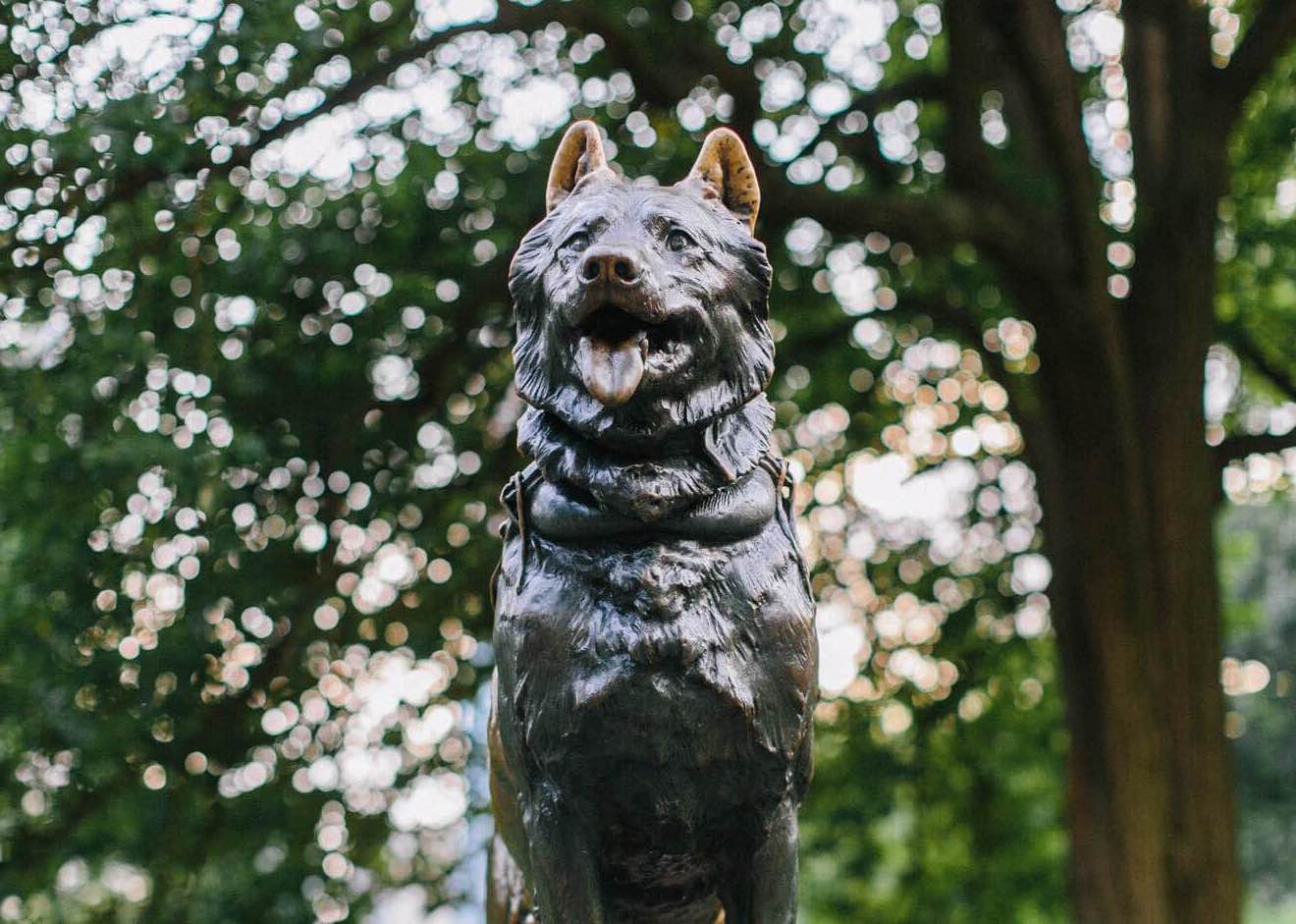You’ve also probably seen your fair share of therapy dogs and service dogs around the neighborhood or sniffing through the airport. Police dogs and military dogs are a familiar sight, both on TV and in real life, as many working dogs are trained to perform very specific roles to serve their handlers and our nation. The roles of working dogs have evolved over the years, but a few early dogs set an excellent example for their successors.
Service Dogs in Action: The Story of Balto
Sled dogs have long been used around the world, particularly in arctic regions, to transport both supplies and people around areas where other modes of transportation were impossible. During the Alaskan diphtheria outbreak in the 1920s, sled dogs played an instrumental role in helping those affected.
In 1925, an outbreak of diphtheria ravaged the Alaskan town of Nome and there was not enough serum to treat the number of people who had been infected. Supplies were only available in a town over 700 miles away and inaccessible except by sled. To transport the serum, 20 dog sled teams worked together in a relay that followed a path now known as the Iditarod Trail.
Balto was the lead dog on the team that carried the diphtheria serum during the final leg of the relay. A very hazardous stretch of the run was also led by another dog named Togo, proving that dogs are better than humans at just about everything, including teamwork. Balto blazed the final leg of the trail through freezing cold and punishing conditions, delivering the life-saving serum in just six days. Despite a bit of controversy following the run over who deserved the most publicity (Balto vs Togo, a rivalry they were both blissfully unaware of), a bronze statue was ultimately erected in Balto’s honor in Central Park. The statue serves as a tribute to all the sled dogs that traveled over rough ice and treacherous waters, and is inscribed with three words: “Endurance · Fidelity · Intelligence.” These monikers continue to describe working dogs today.
What Other Services Can a Working Dog Provide?
Working dogs undergo rigorous training to perform specific, real-life tasks and they take them just as seriously you take your own job.
These fiercely devoted pups can perform a number of important services, including:
- Police dogs – Better known as K-9s, police dogs are trained to assist law-enforcement personnel in the line of duty. In addition to protecting their handlers, police dogs can pursue and detain criminal suspects and may also be used to sniff out dangerous or illegal substances.
- Military dogs – Similar to police dogs, military dogs assist military personnel with their operations. Military dogs can be used as trackers, scouts, sentries, detectors, and for search and rescue.
- Detection dogs – These dogs are trained to sniff out specific materials including explosives, illegal drugs, human remains, and other substances. Some dogs can even be trained to detect certain types of cancer.
- Therapy dogs – Certified therapy dogs provide emotional support to sick and injured patients, frequently traveling to nursing homes and hospitals.
- Search and Rescue dogs – Known for their agility, intelligence, and superior sense of smell, search and rescue dogs serve in many fields such as tracking, avalanche rescue, specialized search, and even cadaver location.
- Herding dogs – A working dog of the more traditional type, herding dogs work with different types of livestock such as cattle and sheep. Herding dogs can also be companion pets and may compete in herding trials as well.
- Service dogs – A service dog is trained to provide specific support services to persons with disabilities. Service dogs may include seizure alert dogs, guide dogs for the blind, and mobility assistance dogs.
It’s no secret that dogs can do some pretty amazing things (have you ever watched your pup run in his sleep?!), and when given the opportunity they can also work as hard as the best of us. This Labor Day, we invite you to celebrate not only the men and women who work in this nation, but also the very good dogs who serve alongside them.









